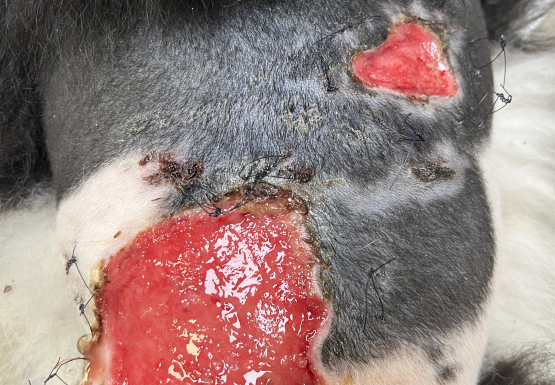
Our SureKlot™ product range is the result of an eco-responsible project to reduce the processing of waste from the shellfish industry and thus avoid the release of toxins harmful to our environment while valorizing the latter through the extraction of the chitin for the development and production of chitosan-based medical devices.
Indeed, the transformation of chitin into chitosan, associated with a patented process (PBT™) makes it possible to maximize the biological properties of chitosan and in particular the muco-adhesive, hemostatic, anti-microbial, anti-inflammatory, analgesic and biodegradable properties.
SureKlot™ is a line of moderate to severe bleeding control (venous or arterial), wound treatment and healing products for all animals like dogs, cats, horses, NAC, cows and much more.
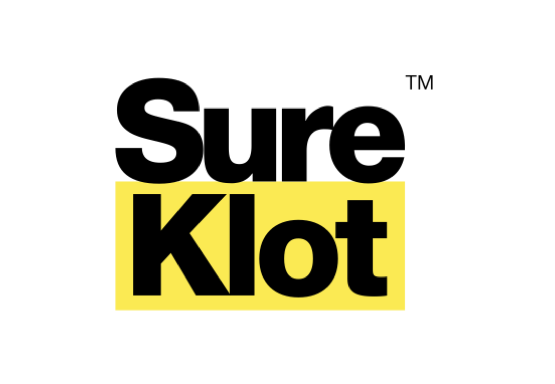
The manufacturing of SureKlot™ medical devices is carried out using an exclusive protonated bioadhesive polymer (Chitosan) technology. This patented process allows the manufacture of hemostats, drug delivery systems and various scaffolds based on biopolymers with customizable bioadhesive properties. These medical devices are unique in the sense that they adhere to tissues when needed and detach easily once their work is completed.
The essence of PBT™ technology lies in maximizing the bioadhesive properties of native chitosan without chemical modifications to its backbone. Structurally, chitosan is a natural polysaccharide composed of glucosamine and N-acetylglucosamine monomers. Chitosan obtains its cationic charge (+ve) through the protonation of primary amine groups (NH 2) present in its glucosamine subunits.
This is why SureKlot™ medical devices have been formulated with chitosan (PBT™), to rely solely on the physical properties and microscopic morphology of this natural material to maximize their cationic charge.
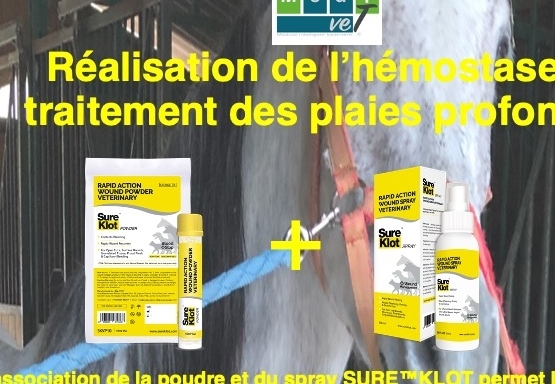
This method of bleeding control is robust enough that it works irrespective of the natural clotting factors, hence PBT is successful even in patients taking the blood thinning medications. Lastly the enhanced cationic charge provided by the PBT biopolymer also provides strong anti-microbial properties to the material and restricts entry of external bacteria into the wound site.
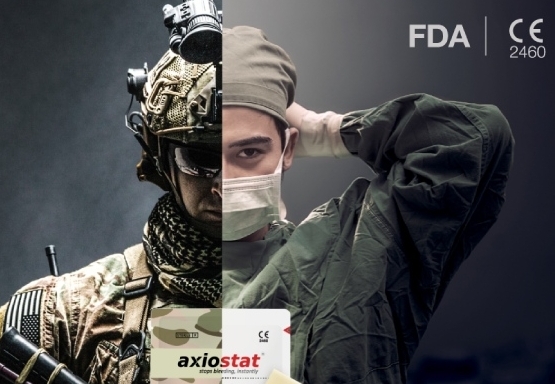
Widely documented by numerous research and scientific publications, thanks to its biocompatibility, biodegradability and non-toxicity, chitosan has antihemorrhagic, antimicrobial properties and promotes wound healing. It can be used for inhibition of bleeding, treatment of traumatic or surgical wounds, treatment of pressure sores and chronic ulcers. Chitosan owes its therapeutic use mainly to the cationic nature of the compound and its hydrophilic character. It demonstrates a certain capacity to stimulate macrophages and neutrophils which destroy pathogens in our body and also stimulates cellular activity (in particular that of fibroblasts responsible for the production of collagen and elastin), the production of cytokines and promotes angiogenesis.
Chitosan has remarkable healing properties by increasing the healing speed of open wounds by stimulating the immune response and tissue reconstruction while preventing microbial infections. This biopolymer has extraordinary biological properties that are both varied and complementary. Chitin and chitosan are non-toxic, biodegradable and bioactive. Chitosan being biocompatible, its presence in the body does not cause an inflammatory reaction. It is bio-resorbable with low and controlled kinetics. It does not exhibit any anti-genic behavior, but has an anti-thrombogenic and hemostatic character. It inhibits the growth of many parasites and drastically reduces the development of infections.
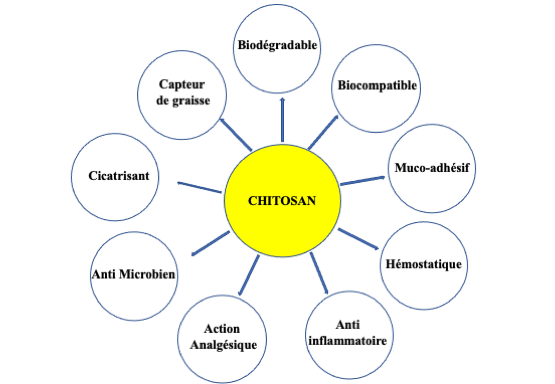
Chitosan has been widely studied as a biomaterial for various applications. Some of its key properties are listed in this image. Due to its biodegradable and biocompatible nature, chitosan has been used in external and implantable medical devices.
As a fat binder, it has been used as a weight loss agent. The mucoadhesive and viscosity-modifying properties make it useful for drug delivery. The hemostatic, antimicrobial, anti-inflammatory and analgesic properties make it an excellent wound management material.
Hemostasis: Cationic chitosan binds to negatively charged blood cells and leads to platelet activation.
Antimicrobial: Positively charged chitosan molecules bind to negatively charged microbial cell membranes, resulting in disruption of the microbial membrane and subsequently leakage of protein and other intracellular constituents.
Pain control: chitosan relieves pain through its analgesic effect by reducing the concentration of inflammatory mediators (bradykinin) at the injury site. It also absorbs proton ions released in the inflammatory site to control pain.
Wound Healing: Chitosan helps in wound healing through multiple pathways such as activation of polymorphonuclear cells, activation of fibroblasts, production of cytokines, migration of giant cells and stimulation of collagen type synthesis. IV.
Scar prevention: chitosan reduces the production of TNF-ß1&2, responsible for scars. Collagen produced in the presence of chitosan consists of fine reticulin-like fibrils rather than mature bands of dense collagen.
SureKlot™ is a line of products for moderate to severe bleeding control, wound treatment and healing for all animals like dogs, cats, horses, NAC, cows and much more.
All SureKlot™ products contain chitosan, a natural cationic biomaterial that has hemostatic and healing properties. They are effective, non-toxic, non-irritating, non-exothermic and biocompatible. The product range includes a fast acting wound spray, powder for cavitated or superficial wounds, gel for chronic wounds and autolytic debridement, bandages and patches for the control of moderate to severe bleeding but also for treatment external wounds, surgical or autolytic debridements.